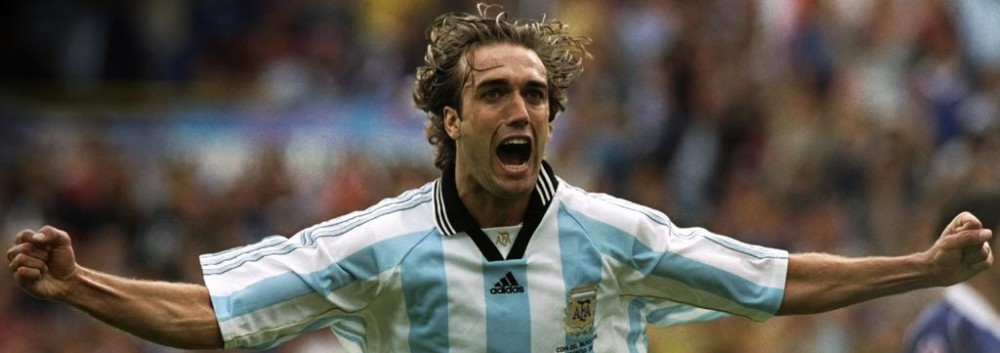Obscure Footballer of the Week returns. TFN Editor Hugo Greenhalgh profiles Irish footballer Ronnie O’Brien…
How could a nominee for Time’s Person of the Century fade into obscurity? A man whose name at one point, sat alongside Albert Einstein, Martin Luther King and Mahatma Gandhi? Irish footballer Ronnie O’Brien was an overnight cult celebrity and one of the first true “Year 2k” internet sensations. While the fad wore off quickly and his career was largely forgotten, he merits discussion as more than just a novelty figure but as one of the first European footballers to make their mark in America, in the pre-David Beckham MLS era.
Born in Bray in 1979, O’Brien was a member of the prodigious Ireland youth side that included Robbie Keane, Richard Dunne and Stephen McPhail, and won the U-18 European Championship in 1998. At the time he was a Middlesbrough player but failed to break into the first team and was released in 1999. This was when O’Brien’s career took a bizarre twist. Typically a Boro cast-off of his ilk might expect a move to somewhere like Hartlepool or perhaps back to the Irish league; what O’Brien did not expect was a call from Italian giants Juventus.
This unlikely move was brokered by the most unlikely of middlemen: Paul Merson. Merson was still at Boro at the time and his agent, Steve Kutner, was also the Juventus agent for Britain. Kutner asked if there was anyone worth taking a look at and Merson mentioned O’Brien. Kutner reported back, Juve watched a video of him playing in the reserves and were convinced.
O’Brien packed his bags and joined up with ‘the Old Lady’ at their training camp in Chatillon in the foot of the Alps. Here he was put in a hotel room with club captain Antonio Conte and made to feel part of the first team, even featuring on Juve’s preseason poster alongside Zinedine Zidane and Ciro Ferrara. The whole affair left Boro manager Bryan Robson somewhat confused. After the move he said, “Ronnie O’Brien is not good enough. People jump to the ceiling because he has gone to Juventus but he hasn’t done anything yet”.
Unfortunately, Robson’s verdict would prove a fairly accurate but it did not stop O’Brien developing something of a cult status in his native Ireland. The idea of their fellow countryman, a little out of his depth at one of the biggest club sides in the world was endearing, if not a little inspiring too. As he said at the time, “It’s an unbelievable experience. Even if nothing comes of it, I’ve learned a hell of a lot. It’s a dream come true”. Ultimately, O’Brien’s Juventus career can be reduced to a handful of Intertoto Cup appearances but he did become the third Irishman to wear the famous black and white shirt – following in the footsteps of Matthew Kunding and Liam Brady.
With the turn of the Millennium approaching, many publications began compiling lists and rundowns of all-time greats – not least Time Magazine’s Person of the Century. Rather naively, this was open to a public poll and consequently, open to manipulation. What started as a round-robin email spiralled into something of a national campaign as hundreds of thousands of Irish men and women voted for Ronnie O’Brien, their very own ‘man in Turin’, as Person of the Century. Somewhat unsurprisingly, Time called foul play, reinforcing the rule that “whimsical candidates will not be counted”. Albert Einstein eventually won the prize, with Franklin D. Roosevelt and Mahatma Gandhi as runners-up.
O’Brien’s story doesn’t end there however. In the early Noughties a new dawn was breaking on the other side of the Atlantic. Football was undergoing a resurgence in popularity following the USA’s strong showing in the 2002 World Cup and O’Brien joined in the fun, signing for Dallas Burn the same summer, where he would play for four years. Having last played for Dundee United, it was the heat which he found the main culture shock. Speaking after his debut, in which he scored the winner, he said, “It is unbelievably hot here. I like the sunshine and all, but this heat. To come and play football here is a hard, hard job.”
He started the 2003 season with much promise, but this was cruelly cut short by injury. In a game against DC United, Ukrainian midfielder Dema Kovalenko broke his leg with a reckless, two-footed tackle. O’Brien was out for the rest of the season and during that time he contemplated retirement. Playing with a metal rod in his leg, he knew had more to given in his stop-start career. Now in his mid-20s, he began to show some of the potential that Paul Merson had recognised back on Teesside. That season he became Dallas’ talisman, finishing with 10 assists. He was named in the MLS Best XI of 2004 and was in it again the following year.
Despite this form, O’Brien had always felt ignored by the Irish International setup. Steve Staunton tried to call him up in 2007, but O’Brien rejected him, stating he wanted to concentrate on his club football. He played for Toronto and San Jose Earthquakes but returned to Dallas after his retirement in 2009. It was a city he had really fallen for and he sees himself as an adopted Texan, where he has settled well with his wife Vicki and son Zinedean, named after his former Juve teammate Zidane. He joined the coaching staff at FC Dallas and in his spare time can be found watching the Dallas Mavericks, the city’s basketball team.
O’Brien was the Dale Jennings of his day perhaps; a speculative foray into Northern hinterlands from a European giant. David Beckham may have given credence to the MLS vision in 2007, but O’Brien was there before it was cool.

